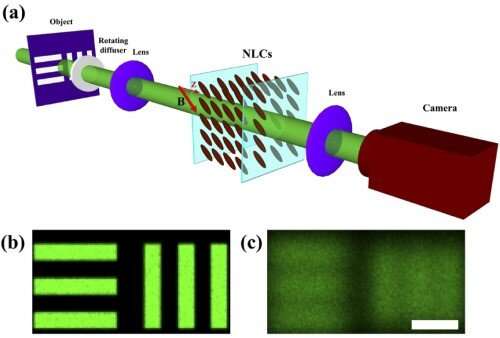Although counter-intuitive, noise can help image reconstruction

People are always eager to obtain clear imaging results through some turbid media, so a variety of methods have been developed to filter out noise and strive to improve the quality of imaging, as if noise is born as the evilest enemy.
However, there is always a gap between intuition and truth. In some cases, noise does not degrade the image quality, rather can be used to improve it. For example, the stochastic resonance (SR) method is proved effective to recover the noise-hidden images.
A team led by Prof. Liu Hongjun from the Xi'an Institute of Optics and Precision Mechanics (XIOPM) of the Chinese Academy of Sciences (CAS) demonstrated a SR-based image reconstruction via magneto-optical molecular reorientation in bulk Nematic Liquid Crystals (NLCs) theoretically, which was made of affordable functional materials without dimensional restriction. Result was published in Optics Express.
In their research, the diffusive images were effectively recovered by reasonably optimizing the input light intensity, the magnetic field direction, and the correlation length.
According to the researchers, the secret of using noise to enhance the quality of image reconstruction is that the underlying signals are reinforced by coupling with scattering noise under reorientation-induced self-focusing nonlinearity, where noise plays a positive role. However, incoherent modulation instability occurs and the enhancement process of signals is destroyed under strong self-focusing nonlinearity.
They also studied the quality of image reconstruction with different magnetic field angles. The gain curve versus the magnetic field angle first increases, and then decreases. The NLCs have the maximum reorientation response to the light field at the angle of about 50 degrees.
These results suggest a potential method to recover the noisy images and promote the application of NLCs in the area of image processing.
More information: Yongbin Zhang et al, Magneto-optically reorientation-induced image reconstruction in bulk nematic liquid crystals, Optics Express (2021). DOI: 10.1364/OE.425642
Journal information: Optics Express
Provided by Chinese Academy of Sciences




















